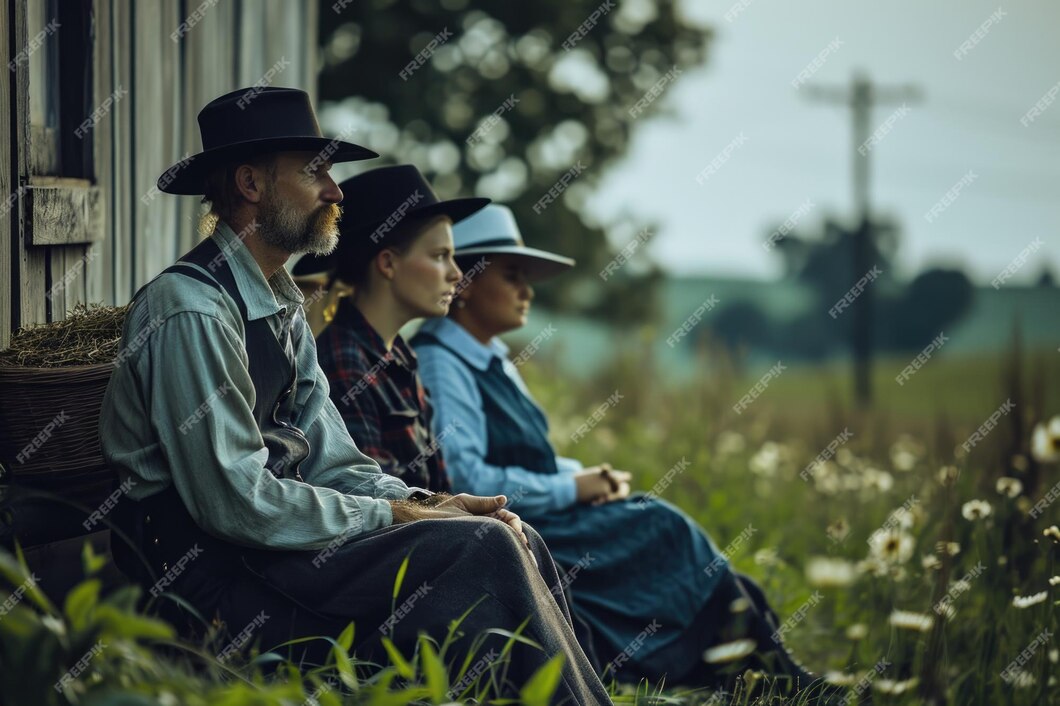The Mennonite lifestyle is rooted in simplicity, faith, and community. This Christian group traces its origins to the Protestant Reformation of the 16th century, emphasizing a way of life that reflects their religious beliefs. Mennonites are known for their pacifism, community-oriented living, and dedication to a humble and sustainable existence. This article explores various facets of the Mennonite way of life, divided into five sections: historical origins, faith and values, daily life, cultural practices, and their approach to modern challenges.
1. Historical Origins of the Mennonites
Mennonites originated in Europe during the Protestant Reformation. They were named after Menno Simons, a Dutch priest who left the Catholic Church in 1536 to join the Anabaptist movement. Anabaptists rejected infant baptism, advocating for adult baptism instead. This radical belief led to widespread persecution, causing many Mennonites to migrate to countries like the United States, Canada, and Paraguay.
Today, Mennonite communities exist worldwide, with significant populations in North and South America, Europe, and Africa. Despite their geographic diversity, Mennonites remain united by their commitment to Christian values, nonviolence, and communal living.
2. Core Faith and Values
At the heart of Mennonite belief is a strong emphasis on following Jesus Christ’s teachings. They prioritize nonviolence, forgiveness, and service to others, often avoiding political involvement and military service. Key values include:
- Pacifism: Mennonites are staunch pacifists, advocating for peaceful resolutions to conflicts.
- Simplicity: They practice humility in their attire, homes, and daily lives, avoiding material excess.
- Community: Collective responsibility and mutual aid are central to Mennonite culture.
- Stewardship: They believe in caring for the Earth as part of their spiritual duty.
Worship services are typically simple, focusing on scripture, prayer, and hymns. Mennonite faith is not just about worship but about integrating Christian values into every aspect of life.
3. Daily Life and Work
Daily life for Mennonites revolves around family, work, and faith. Traditional Mennonite communities, like the Old Order Mennonites, live agrarian lifestyles. They often avoid modern technology, relying on horse-drawn carriages, farming, and handmade goods. However, not all Mennonites shun technology. Some embrace it while balancing modern conveniences with their commitment to simplicity.
Work is seen as a form of worship, and many Mennonites are known for their craftsmanship, agricultural skills, and entrepreneurship. Education is valued, though it often incorporates religious teachings. Schools in conservative Mennonite communities focus on practical skills and moral lessons.
4. Cultural Practices and Traditions
Mennonite traditions vary by community, but common cultural practices include:
- Plain Dress: Conservative Mennonites wear simple clothing, often in muted colors, to reflect humility. Women may wear head coverings, while men typically don plain shirts and suspenders.
- Hymn Singing: Music is a vital part of worship. Traditional Mennonite hymns are sung a cappella, reflecting the community’s appreciation for simplicity.
- Mutual Aid: Mennonites often support each other through organized aid programs, especially in times of crisis or disaster.
- Community Gatherings: Social events like barn raisings, potlucks, and quilting bees are common, fostering a sense of unity.
Modern Mennonites may adopt more relaxed cultural practices, blending traditional values with contemporary lifestyles.
5. Mennonites and Modern Challenges
Mennonites face unique challenges in balancing their traditional values with the demands of a modern world. Globalization, technology, and urbanization have influenced many Mennonite communities, prompting debates about how much change is acceptable.
While some groups remain isolated, others engage with broader society through mission work, disaster relief efforts, and advocacy for social justice. Mennonites are often at the forefront of environmental conservation, reflecting their belief in stewardship.
The diversity within the Mennonite community allows for a range of responses to modern challenges, from strict adherence to tradition to thoughtful integration of new ideas.
Conclusion
The Mennonite lifestyle offers a unique perspective on living a purposeful and faith-driven life. Grounded in simplicity, community, and a deep commitment to Christian values, Mennonites demonstrate how tradition and spirituality can coexist in a rapidly changing world. While they face challenges in maintaining their identity, their adaptability and dedication to core principles continue to inspire those seeking a more meaningful way of life.
FAQs About the Mennonite Lifestyle
1. What is the difference between Mennonites and Amish?
Mennonites and Amish share Anabaptist roots but differ in their approach to modern life. Mennonites are generally more accepting of technology and modern conveniences, while the Amish adhere to stricter traditions.
2. Do Mennonites live without electricity?
Not all Mennonites avoid electricity. While conservative groups like the Old Order Mennonites may shun modern technology, others use it selectively.
3. Can anyone become a Mennonite?
Yes, anyone can join the Mennonite Church by professing faith in Jesus Christ and adopting Mennonite values. Many churches offer programs for new members.
4. Are Mennonites pacifists?
Yes, pacifism is a core tenet of Mennonite belief. They avoid military service and advocate for nonviolent solutions to conflicts.
5. Do Mennonites marry outside their community?
Marriage practices vary. Conservative Mennonites typically marry within their community, while more progressive groups may allow interfaith marriages.
6. Where can I learn more about Mennonite culture?
Visiting a local Mennonite church, reading books on Anabaptist history, or attending cultural events hosted by Mennonite communities are great ways to learn more.
